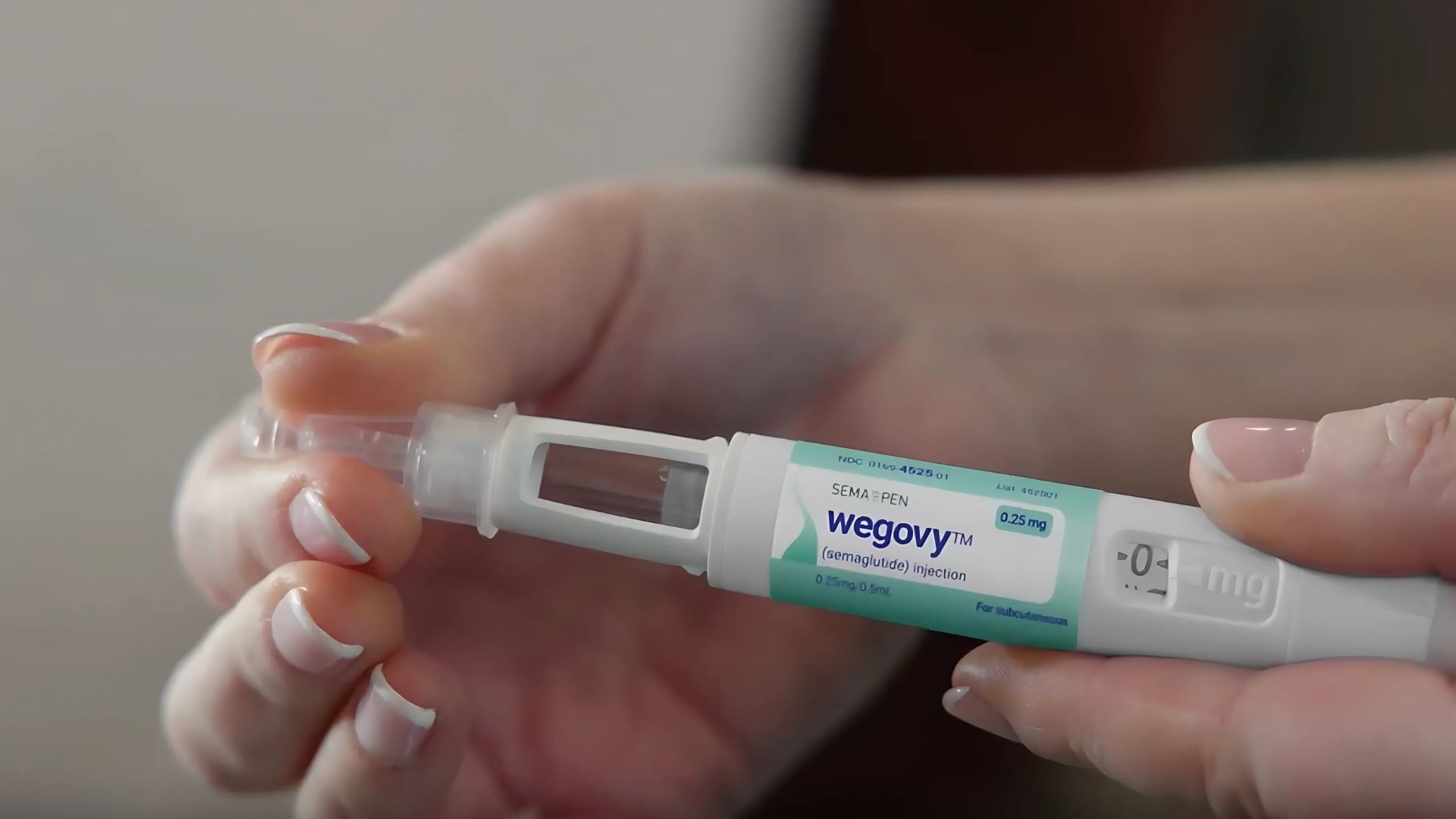How to treat loose skin after weight loss
Discover why we get loose skin after major weight loss. Learn how we can minimise it and manage it.

Losing a significant amount of weight is an achievement that we rightly celebrate.
For many, it leads to more energy and makes it easier to get around and enjoy activities. It can improve blood pressure, cholesterol and blood sugar. And it can mean a welcome boost in self-confidence.
However, developing loose or saggy skin after major weight loss is an outcome that affects many patients. Despite this, it's not often discussed.
Understanding why loose skin develops is important because there are things we can do before and during our weight loss journeys that can help.
Why do we get loose skin after weight loss?
The skin has three layers. Each has an important job to do.
The epidermis is the top layer. It's constantly renewing itself with new skin cells and provides an active protective barrier.
Beneath that is the dermis. This contains two essential proteins: collagen for strength and elastin for stretch. These protein fibres allow our skin to expand during growth spurts and as we gain weight.¹ The dermis also contains blood vessels and nerve endings.
This bottom layer is the hypodermis. Like the dermis, the hypodermis contains blood vessels and nerve endings. However, its most important job is to provide a cushioning layer of connective tissue and fat.
Crucially, the hypodermis is where much of the fat gets stored when we gain weight. This can weaken the collagen and elastin fibres in the dermis as they become excessively stretched.
When we lose that subcutaneous fat during rapid weight loss, these damaged fibres don't successfully return to their original state. This allows those saggy skin folds to form.
Is there anything we can do to prevent loose skin?
Knowing why loose skin happens is helpful because we can take measures before and during weight loss to minimise the damage.
1. Gradual weight loss
The more controlled the weight loss, the more chance your skin will have to tighten back up and regain elasticity. Improvement can continue for up to a year after you've reached your target weight.

Bariatric (gastric) surgery results in the most dramatic weight loss. However, Professor David Kerrigan, a respected bariatric specialist, founded SemaPen to offer an expert-led alternative to gastric surgery.
We specialise in guided weight loss programmes using the injectable medications
Wegovy and
Mounjaro.
These medications can deliver a more controlled and gradual weight loss than surgery.
2. Skincare
Using a good-quality moisturising cream daily is a well-known way to nourish and protect the skin. However, the most important cream you can apply to your skin is sunscreen.
Prevent sun damage by using a lotion with a sun protection factor (SPF) of 30 or above. This will really help to preserve your skin's elasticity.
3. Quitting smoking
The toxic effects of nicotine are well-documented. But did you know smoking increases the production of an enzyme called metalloproteinase?
This is a problem because it breaks down collagen in the skin, causing it to sag.²
3. Minimising alcohol intake
Alcohol has a dehydrating effect and can deplete us of vitamins A, B and C. These vitamins are essential for skin health.
4. Staying hydrated
You've probably heard this advice from medical professionals: 'To maintain a healthy body, you should drink about two litres or eight glasses of water a day'.
Following this will definitely help minimise skin sagging. A healthy collagen fibre is made up of more than 30% water, while a healthy dermis contains 70% water.
Drinking enough water daily is among the easiest and most effective ways to help yourself.
5. Strength training
A successful weight loss plan must include regular exercise in some form.
This benefits the skin because we're not just burning calories – we're also building muscle. If we build muscle beneath the skin, it helps provide support as the fat layer is burned by the body for energy. Strength training is a very effective way to achieve this.
6. Dietary nutrition
That muscle we're building needs plenty of protein – and our skin needs vitamins and minerals. These include:
- Vitamin A
- Vitamins B2, B3 and B6
- Vitamin C
- Vitamin D
- Vitamin E
- Zinc
- Selenium
- Omega-3
Many of these are for collagen production, maintenance and protection – all vitally important if we want to minimise sagging.

However, if you've succeeded in drastically reducing your food intake, you'll need to choose the right foods to keep your skin healthy. You'll also need the right supplements in the right amounts. That's why it can be helpful to have the input and support of a dietitian whenever you need advice.
At
SemaPen, we keep your nutritional health at the core of our support. That's why our dietary experts are always available to offer advice. Together with our doctors, psychologists and specialised nurses, they've been helping patients achieve their weight loss goals for more than 20 years.
Why does skin loosening affect some people more?
Factors like age and genetics make it more likely for significant weight loss to result in loose and sagging skin. The older the skin, the less elasticity it will have – and some people are genetically predisposed to produce less collagen.
Will it tighten up by itself?
Over time, the skin can regain some of the lost elasticity if the damaged collagen can be replaced and repaired.
A variety of non-surgical treatments have been developed to help. You will need to consult a dermatologist or a cosmetic surgeon for more information.
Non-surgical methods to tighten loose skin
- Ultrasound skin tightening: in this treatment, ultrasound therapy is used to stimulate the dermis to produce collagen fibres again. The targeted area will respond with swelling, redness and tenderness. However, these effects are temporary.
- Radio-frequency therapy: this treatment uses low-frequency electromagnetic waves to create heat within the dermis. This encourages the production of collagen, elastin and new skin cells.
- Laser skin tightening: again, the goal of this treatment is to create heat deep within the dermis. Rather than using electromagnetic waves, however, it uses lasers.
Can loose or saggy skin cause problems?
Yes, unfortunately.
If the saggy skin forms folds, they can rub against each other, causing chafing and trapping moisture, sweat and bacteria. If left untreated, this could cause a rash called intertrigo. This is the same as nappy rash in infants.

A fungal overgrowth could also happen in the folds. This could lead to a yeast infection, causing redness, itchiness and burning. If not successfully treated, this could become infected and even ulcerated.
Daily washing with a pH-neutral soap and careful drying will help. It's also recommended that you keep disposable skin wipes and a pack of soft tissues handy. This way, you can wipe away moisture and sweat during the day and then pat it dry. Try to wear clothing that's breathable, quick-drying or designed to wick away moisture, too.
For some, the issues caused by loose skin become so serious that participating in activities or sports is too uncomfortable. Even just everyday activities could become too painful. It can also have a negative effect on mental wellbeing, potentially leading to body image issues, self-consciousness and social withdrawal.
If you have loose skin and it's causing you problems you can't tolerate, you might want to explore cosmetic surgery treatments.
Cosmetic surgery treatments for loose skin after weight loss
The type of surgery designed to treat loose skin after major weight loss is called 'body contouring'. It comes in several forms:
- Panniculectomy: removal of the 'apron' of skin below the belly button that can hang over the groin and thighs
- Arm lift (brachioplasty): removal of excess skin on the upper arm
- Belt lipectomy: removal of loose skin from the buttocks and outer thighs
- Thighplasty: removal of loose skin on the inner thigh
- Breast lift (mastopexy): removal of excess skin from the breasts
- Tummy tuck (abdominoplasty): removal of loose skin and tightening of muscles in the belly area
- Facelift (rhytidectomy): removal of excess skin around the neck and contouring of facial skin
It's possible to obtain an NHS referral for some of these procedures if they're deemed medically necessary. Anyone experiencing repeated infections, non-healing ulcerations or severe limitations to everyday activities should ask their GP for a referral for assessment.
SemaPen specialises in sensible weight loss plans using diet, exercise and injectable weight loss medications. Why not explore our treatment options or get in touch with our team?
Sources
1. Aziz, J. et al. (2016) "Molecular Mechanisms of Stress-Responsive Changes in Collagen and Elastin Networks in Skin" Skin Pharmacology and Physiology, 29(4)
https://doi.org/10.1159/000447017
2. Lahmann, C. et al. (2001) "Matrix metalloproteinase-1 and skin ageing in smokers" The Lancet, 357(9260)
https://doi.org/10.1016/S0140-6736(00)04220-3
3. Téllez-Soto, C.A. et al. (2021) "In vivo determination of dermal water content in chronological skin aging by confocal Raman spectroscopy" Vibrational Spectroscopy, 112
https://doi.org/10.1016/j.vibspec.2020.103196












